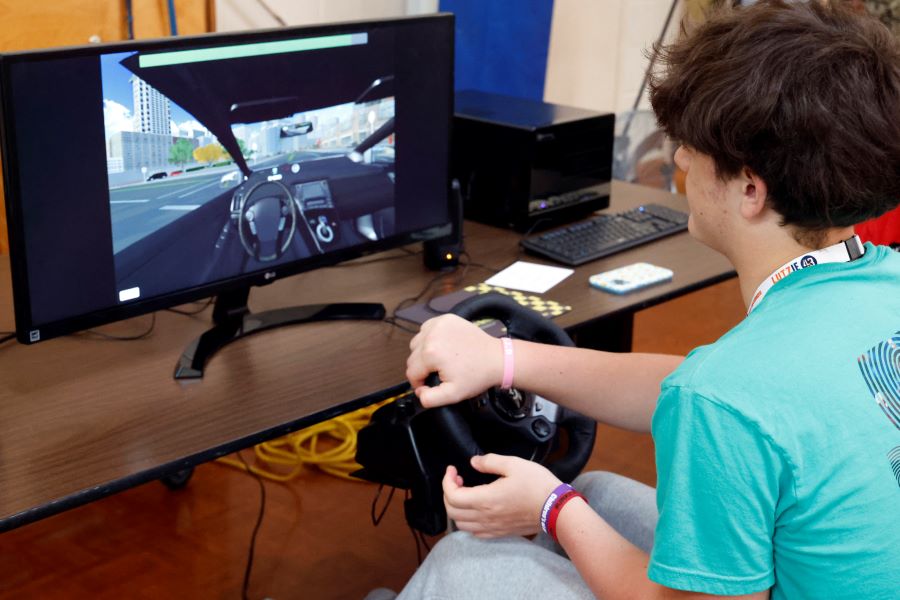At the Translational Research Injury Prevention (TRIP) laboratory at the University of Alabama, a research participant opens the door of a Mercedes GLE 63S AMG and slides onto crimson leather seats. She buckles her seatbelt, starts the car, and then goes exactly nowhere.
The car, donated to The University of Alabama by Mercedes-Benz earlier this year, is complete with everything except the parts that make it go. It is the centerpiece of a driving simulator capable of powerful, data-driven research on human behavior and driving.
“The interior is fully intact,” said Dr. Despina Stavrinos, director of UA’s Institute for Social Science Research. “They see the steering wheel and instrument panel, and everything is where they expect it to be because it’s a real vehicle.”
A large, curved screen immerses the driver in a simulated environment. Another screen behind the car and LCD screens in the side mirrors ensure that when participants check their mirrors, they see the simulated environment. Controlled air even blows through the vents.
“When people know they’re being observed, they act differently,” Stavrinos said. “So, the more immersive and high fidelity the instrument you’re using, the more natural behavior they’ll exhibit.”
A Safe Place for Teens to Drive
The TRIP lab has stationary vehicle simulators and desktop computer simulators, both in the lab and portable versions for high schools. The simulators’ virtual environments are safe places for teens to learn about the dangers of distracted driving.
Distracted driving is a growing issue on the road, especially for teenagers. So, distracted driving related research and outreach to high schools in Alabama is a focus for the TRIP lab. The Alabama Department of Transportation has joined forces with the TRIP lab to take portable, desktop simulators into Alabama high schools.
“The portable simulators look like a video game, and students jump at the chance to drive,” said Allison Green, Drive Safe Alabama coordinator, ALDOT. “Once the student is behind the wheel of the simulator, they experience how difficult it is to drive safely if the simulator prompts them to make a call or text a friend. Crashing into a road sign or crossing over into a lane of oncoming traffic, which leads to point deductions, clearly teaches the dangers of distracted driving.”

Behind the fun and cool technology is an important mission. The TRIP lab’s behavioral research and education outreach is all about achieving a significant reduction in the rate of transportation-related deaths, injuries, and resulting disabilities. With more than 144,000 crashes occurring on Alabama roads in 2022, there is opportunity to have significant impact on a serious issue.




